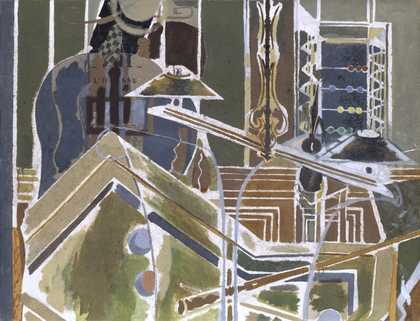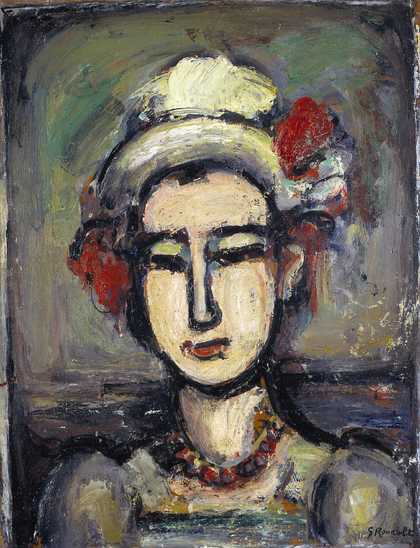Braque, of all modern painters, is the most ‘French’, the one with the deepest roots.
Braque’s soul is possessed by two geniuses, the same two that have always been rivals in history of French art: one is the faculty of abstract thought, the other of feeling, and both spring from a sympathetic attitude towards things, and from a desire to understand them through the mind and through the heart.
There are indeed two painters in Braque. When in 1907 and in 1914 he set up, together with Picasso, that training school of integral cubism, which was destined to make the cult of pure form a characteristic of our age, the painter of guitars at that time seemed wholly absorbed in the problem of reducing reality to a set of abstract relationships; in the course of those seven years he penetrated more deeply into the intimate structure of forms than any other painter.
Then, after the war which had kept him away form his easel for four years, the hermit came back to the world, and sophist turned realist. His fruit paintings and nudes date from this period. The two roads he had followed up to then met, and for the last fifteen years Braque has been gathering the golden fruit of his maturity.
The son of a work man, Rouault was born in a cellar during the bombardment of Paris in 1871.Unusually precocious in drawing, he took a night school course, while still apprenticed to a glass worker. Eventually he entered the Ecole des Beaux Arts and there became, in company with Matisse, the pupil of Gustave Moreau.
His style is not the result of laborious research; it is a spontaneous expression and shows a sincere interpretation of life.
The spectacle started by a parade; one by one appeared the figures from the Theatre Guignol, for whom Rouault was by turns the animator and the designer.
Rouault’s dramatic or burlesque situations are persistently dominated by characters holding a symbolic value. The masses of figures are made up by fat bourgeois, Gold Belly or The Superb Cuckold, by priests of Satan and by chocolate soldiers, taken from Courteline or George Bernard Shaw.
Bursts of colour overflow the contours and clothe with a jewel-studded coat these monsters who are the incarnation of the cardinal sins.
Rouault is perhaps a gothic painter, but he is neither an archaist nor a false primitive. His work is influenced by medallions of the first Costantinian era, by mosaics and by the glass workers of Chartres, but is not merely an imitator of the old craftsmen.
Germain Bazin


